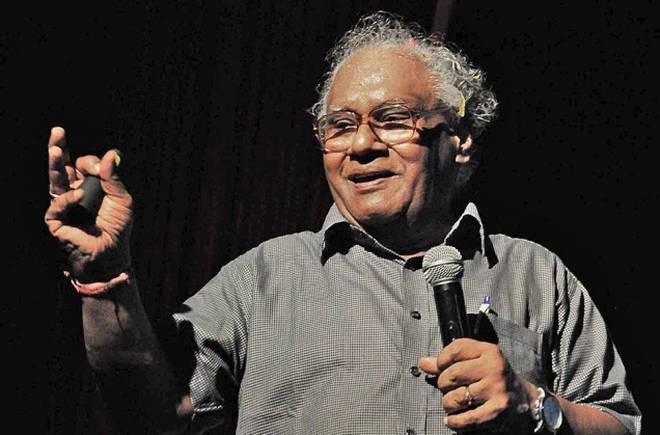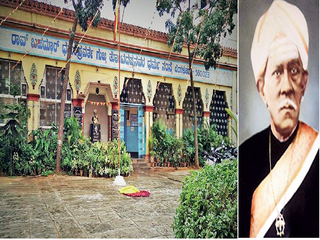Monthly Archives: September 2017
32
31
30
29
28
This doctor-couple has healed the wounded in both war and peace

It was February 1967, four years be fore India played a pivotal role in the Bangladesh liberation war and five years after it suffered miserably during the Chinese aggression. Delhi Cantonment was not as crowded as today and the air was still nippy when two lieutenants of the Indian Army, NK Manchanda and Anju, met at the army hospital. A year later, they tied the knot and 36 years later, they retired as major generals.
From healing injured soldiers and prisoners of war to treating accident victims post retirement, they’ve served the country with their stethoscopes.Major General Anju was the first woman officer to become deputy director of medical services (now renamed MG Met) Central Command and even won a Vishisht Seva Medal (VSM). Major General NK Manchanda, who lives in Bengaluru, spoke to TOI fresh on the heels of completing Anju’s autobiography, `Bold’, which was started by her but finished by Manchanda, his daughter Sonia and son-in-law Girish Raj after Anju passed away. Excerpts from the interview:
You started your careers together. Tell us about the 37 years in service.
While our spectacular career lasted more than 37 years, it was not without challenges. Of all the years we served the country , we spent only about 50% of them together. It was difficult when we had to go to different places. At one point of time, we were separated for five years -she was posted in Rajouri (Jammu & Kashmir), while I was in Hyderabad. But our careers were fulfilling, both in terms of the service we offered and the top positions we reached, which was also very rewarding
Both of you saw two important wars -1971and Kargil in 1999. Can you recollect your experience?
During Kargil, both of us were in Delhi. I was with the army headquarters and she was posted at the Army R&R Hospital, which got all the casualties. During the 1971 war, we were both very young. I had gone through Tripura to Bangladesh as a regimental medical officer, while she was posted in Delhi. But she was the doctor who accompanied Pakistani prisoners of war on a flight and brought back our own. We worked together, rose together and retired together -March 2004 and May 2004 (Anju).
Your service didn’t end with the army. Tell us more…
For one year after retirement, we did nothing. We didn’t want to be separated again. But at the behest of former defence minister George Fernandes, we were requested to serve at Mallya and Vydehi hospitals. I joined Mallya.While I worked only for a year, she continued to work until she passed away. She even did a lot of other things apart from helping the hospital. She was a dedicated doctor, and one of a kind.
Tell us about ‘Bold’ and how the idea of writing an autobiography came to Anju’s mind.
It was her idea, and she had started writing it after we completed service. But she was a doctor first, which meant that her job after retirement became her priority and the book remained incomplete. She said she would finish it only after she quits her job, but she passed away before that.And we couldn’t let such a story, which we hope will inspire many more young women officers in the army, remain untold. ‘Bold’ is not just a mirror of Anju’s illustrious record of selflessness, but also a portrait of the life of honour in the Indian Army.
source: http://www.timesofindia.indiatimes.com / The Times of India / Home> City News> Bangalore News / TNN / September 27th, 2017
C.N.R Rao chosen for international honour for materials research
The Bharat Ratna awardee is the first Asian to be chosen for the prestigious Von Hippel Award
Eminent scientist, Professor C.N.R Rao, has become the first Asian to be chosen for the prestigious Von Hippel Award for his immense contribution in materials research.
The award is the US-based Materials Research Society’s (MRS) highest honour.
It recognises “those qualities most prized by materials scientists and engineers – brilliance and originality of intellect, combined with vision that transcends the boundaries of conventional scientific disciplines,” according to the MRS.
The award citation noted Mr. Rao’s immense work on novel functional materials, including nanomaterials (having particles of nanoscale dimensions), graphene (the strongest and thinnest material) and 2D materials, superconductivity, and colossal magnetoresistance (change in electrical resistance of a material in a magnetic field).
The award will be presented in Boston on November 29, during an MRS meeting, according to a release issued by the Jawaharlal Nehru Centre for Advanced Scientific Research here of which Mr. Rao, a Bharat Ratna awardee, is the founder president.
The award includes a cash prize, trophy and a diploma.
source: http://www.thehindu.com / The Hindu / Home> Sci-Tech> Science / by PTI / Bengaluru – September 23rd, 2017
Over 100 Years of Hospitality : Gubbi Thotadappa, the legendary Philanthropist, continues to host tourists, students
An inn set up by Gubbi Thotadappa, the legendary philanthropist, continues to host tourists and students
If any one expects a favour free of charge, ‘Is it a Gubbi Thotadappa Choultry? would be the instant colloquial reaction. Gubbi Thotadappa choultry, close to Bangalore City Railway station and Kempegowda Bus Terminal, is perhaps the oldest non-governmental organisation in the city.
Bangalore has several free hostels belonging to particular communities, but running a dhramashala — a free choultry (inn) for the visitors or tourists, and continues to do the same even after a century is a remarkable feat.
This noble act is the brainchild of Gubbi Thotadappa, who was born in 1838 into a Lingayat-Veerashaiva family at Gubbi in Tumakuru dist. Later, his family moved to Bangalore and he started his business in Mamulpet in the city. In his house, he started offering shelter to students who were coming to Bangalore for studies. Similarly, he opened doors to traders coming from faraway places. When this number increased, he decided to use all his property to the benefit of such traders and students. He bought land from Railways in 1897 and built a choultry which had 10 rooms for students to stay. On February 11, 1903, Krishna Raja Wadiyar IV officially opened dharmashala for visitors coming to city and free hostel to students belonging to Lingayat-Veerashaiva Community.
As he had no children, he donated all his property and founded a trust called Rao Bahadur Gubbi Thotadappa Charity in 1910, and appointed K P Puttanna Chetty as its first president. Since then subsequent office-bearers are carrying out the work as per the wishes of the founder. During Dasara celebration in 1905, he was awarded the title Dharmapravrta, a royal recognition given by the Maharaja of Mysore. In 1910, he was honoured with a title Rao Bahaddur by the British Government. On 21 February, 1910, he died at the age of 72.
The choultry he built was very helpful then for traders arriving in the city to buy or sell things. Minister for Horticulture Shyamanur Shivashankarappa still remembers the days when he would come here by night train from Davanagere and the choultry was very helpful for people like him to take shelter here for a day or two. Even today, the lodging facility offers accommodation at a nominal rate and it is open to all irrespective of region or religion, caste or creed, position or property. It was 25 paise per day. Over a period of time it was raised to Rs 10 and now it Rs 35. The money collected is spent on maintenance of the choultry. At any given time of the day, at least 50 to 60 visitors stay here. It is much-sought-after shelter to countless number of visitors coming even from other places as its name is spread far and wide. Similarly, the free hostel has been a boon to economically poor students .
The trust awards scholarships for academic achievers of the community every year. They maintain hostels at 16 different towns in the state. The hostel facility is given for both boys and girls of the students of Lingayat-Veerashaiva community. Revered Dr Shivakumara Mahaswamiji of Siddhaganga Math Tumkuru was a student in this hostel during 1927 to 1930. S Nijalingappa , one of the chief ministers of Karnataka, was an inmate between 1921 and 1924. Likewise, education minister Sri DH Chandrashekaraiah, accountant general Sri DH Veeraiah, Karnataka state police chief H Veerabhadraiah, and many more such illustrious personalities were benefited by this hostel. While unveiling the statue of Gubbi Thotadappa in 2005, Nijalingappa said: “If this noble person had not started the hostel, economically poor students like me would have spent rest of my life working as labourers in cultivating fields”
In Mamulpet, the old residential building of Gubbi Thotadappa was removed and a shopping complex has been constructed.
During centenary year, the trust built Bell Hotel as a source of income to spend on all its charitable projects. There is also an aesthetically built conventional hall in this building. Every year on the death anniversary day of the founder, in Mythic Society, on Nrupathunga Road, the trust arranges an endowment lecture from eminent scholars on various subjects.
Hostel inmates are given training in personality development by experts. The original Dharmashala building still retains its original form. The century-old building represents the tradition of hospitality for which our city is known.
Whereas the centenary building built with modern architectural style represents modern Bengaluru. There are many lodges in the vicinity of railway station and bus stand. They may have tall buildings, but Gubbi Thotadappa Choultry stands tall as a symbol of humanity.
(The author is a historian)
source: http://www.bangaloremirror.indiatimes.com / Bangalore Mirror / Home> Bangalore> Others / by Suresh Moona / Bangalore Mirror Bureau / September 26th, 2017

